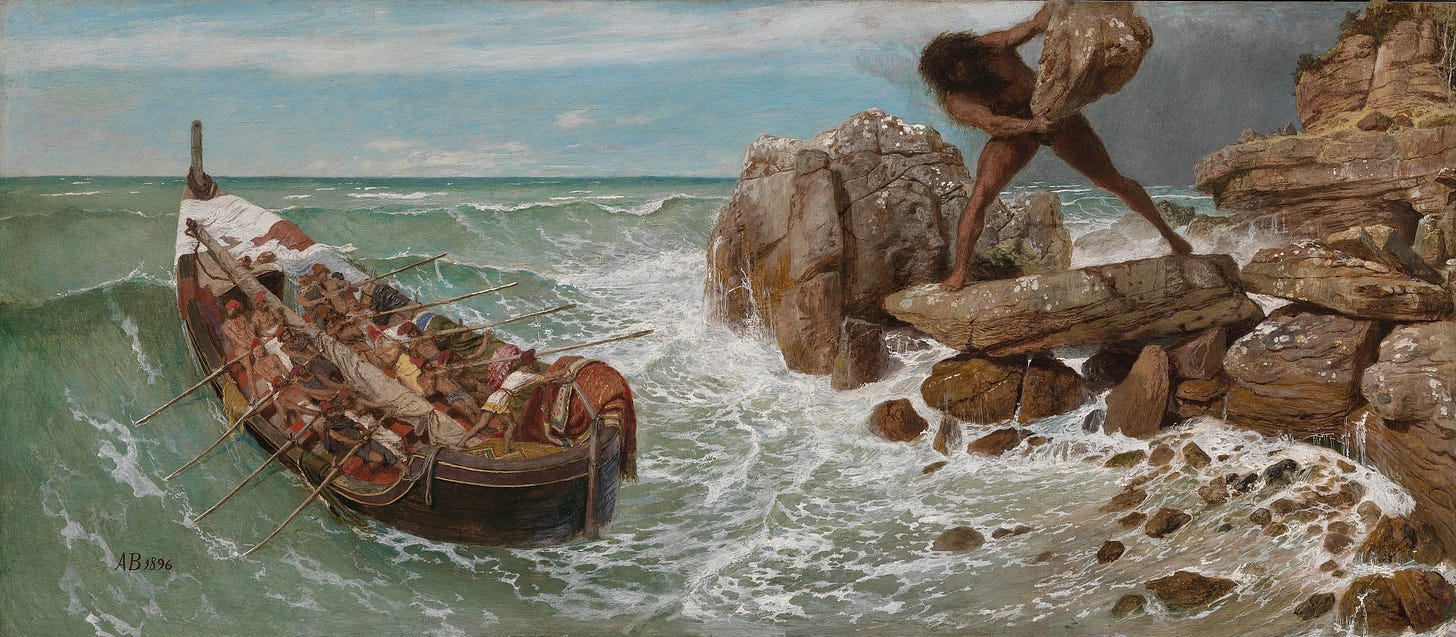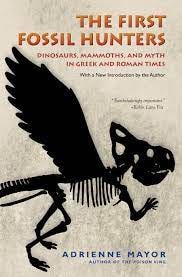In This Episode
In this second part of digging into Homer’s epic tale, The Odyssey, Petros Koutoupis focuses on the Wanderings (books 5-12). Here we meet with witches, nymphs, Cyclopes, gods and goddess and more. Can we discover the inspirations for some of these characters and what they represent? Do we know where they existed in the ancient world? Tune in to find out.
You can listen to this episode on:
Glossary
Aeneas - A Trojan hero and the son of the Trojan prince Anchises and the Greek goddess Aphrodite (the Roman Venus).
Aeneid - A Latin epic poem written by Virgil in the second half of the first century BCE. It tells the tale of the legendary Aeneas fleeing Troy and traveling to Italy.
Alcinous - The mythological king of the Phaeacians.
Apollodorus - Technically, “pseudo-Apollodorus” (1st or 2nd century CE) who authored of the Bibliotheca.
Apollonius Rhodius - Also known as Apollonius of Rhodes, was a 3rd century BCE poet, best known for the Argonautica.
Argonautica - An epic poem about Jason and the Argonauts and their quest for the Golden Fleece.
BCE - Before the Common Era, the equivalent of B.C.
Bronze Age - Defines a historic period dated to approximately between 3300 BCE and 1200 BC. It is characterized by the use of bronze, the presence of writing in some areas, and other early features of urban civilization.
Calypso - A nymph and minor goddess who lived on the island of Ogygia.
Circe - An enchantress and minor goddess who lived on the island of Aeaea.
Corfu - The Italian name of the Greek island of Kerkyra, named during the Byzantine period.
Cyclades - A collection of islands (which form a circle) located in the Aegean Sea and to the East of the Peloponnese.
Cyclopes (singular: Cyclops) - Large monstrous one-eyed mythical cannibals featured in the Odyssey and other mythical tales.
Drepani - The location of the kingdom of the Phaeacians in the Argonautica.
Kerkyra - The ancient Greek name for the island of Corfu located in the Ionian see.
Late Bronze Age - A historical period defining the end of the Bronze Age in the Eastern Mediterranean that began at c. 1500 BCE and ended c. 1200 BCE.
Levant - The general geographical region of the Eastern Mediterranean and Western Asia, more centralized around modern-day Israel, Syria, Lebanon and Jordan.
Linear B - An adaptation from the Minoan Linear A, it is made up of hundreds of signs that represent syllabic, ideographic and semantic values that represent an ancient dialect of the Greek language.
Mycenaean - A phase or period of the Bronze Age Greece, spanning from approximately 1600-1100 BCE.
Phaeacians - A mythical race of master sea-farers written about in both the Odyssey and the Argonautica.
Scheria - The location of the kingdom of the Phaeacians in the Odyssey.
Strabo - (64 or 63 BCE – c. 24 CE) A Greek geographer, philosopher and historian who lived in Anatolia.
Telemachy - The first four books of the Odyssey.
Thrinacia - Translating to “with three headlands”, it is believed that this is to be identified with the island of Sicily.
Tyrrhenian Sea - Part of the Mediterranean Sea and off the western coast of Italy.
Wanderings - The books five through twelve of the Odyssey.
Recommended Books
The First Fossil Hunters: Dinosaurs, Mammoths, and Myth in Greek and Roman Times
By Adrienne Mayor
Griffins, Centaurs, Cyclopes, and Giants―these fabulous creatures of classical mythology continue to live in the modern imagination through the vivid accounts that have come down to us from the ancient Greeks and Romans. But what if these beings were more than merely fictions? What if monstrous creatures once roamed the earth in the very places where their legends first arose? This is the arresting and original thesis that Adrienne Mayor explores in The First Fossil Hunters. Through careful research and meticulous documentation, she convincingly shows that many of the giants and monsters of myth did have a basis in fact―in the enormous bones of long-extinct species that were once abundant in the lands of the Greeks and Romans.
As Mayor shows, the Greeks and Romans were well aware that a different breed of creatures once inhabited their lands. They frequently encountered the fossilized bones of these primeval beings, and they developed sophisticated concepts to explain the fossil evidence, concepts that were expressed in mythological stories. The legend of the gold-guarding griffin, for example, sprang from tales first told by Scythian gold-miners, who, passing through the Gobi Desert at the foot of the Altai Mountains, encountered the skeletons of Protoceratops and other dinosaurs that littered the ground.
Like their modern counterparts, the ancient fossil hunters collected and measured impressive petrified remains and displayed them in temples and museums; they attempted to reconstruct the appearance of these prehistoric creatures and to explain their extinction. Long thought to be fantasy, the remarkably detailed and perceptive Greek and Roman accounts of giant bone finds were actually based on solid paleontological facts. By reading these neglected narratives for the first time in the light of modern scientific discoveries, Adrienne Mayor illuminates a lost world of ancient paleontology.






